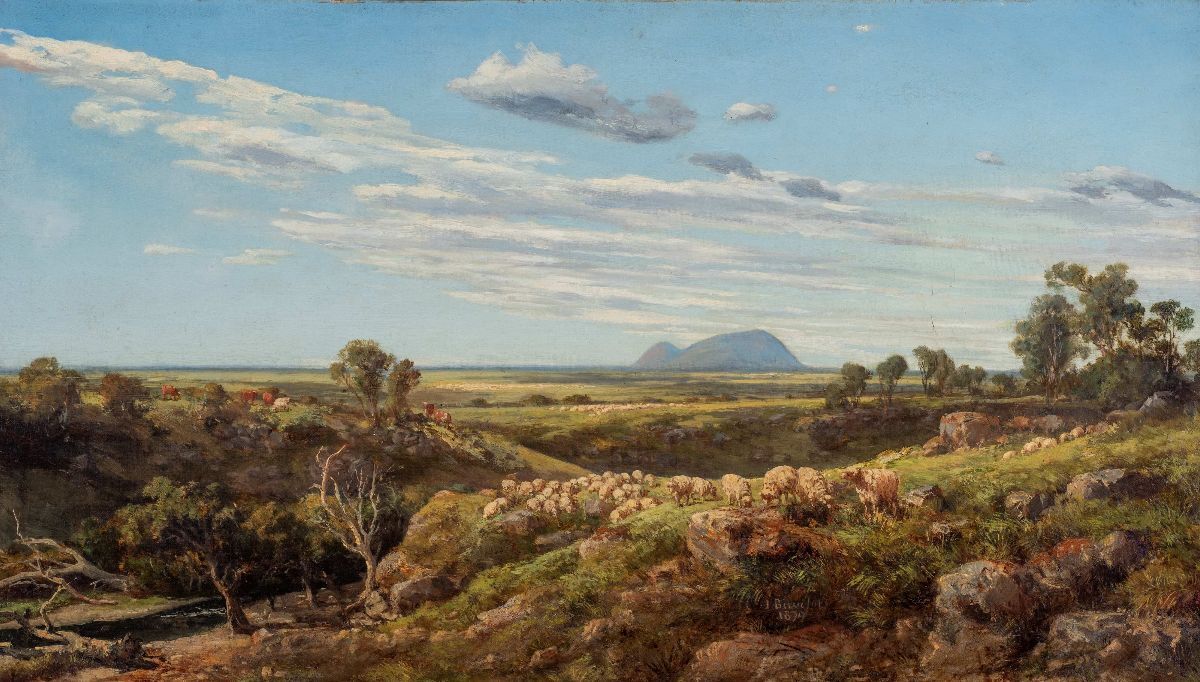Gallery Details
Castlemaine Art Museum (CAM)
14 Lyttleton St
Castlemaine VIC 3450
Telephone: 03 5472 2292
E: info@castlemaineartmuseum.org.au
W: Visit website
Opening Hours
Thursday-Saturday
11am–4pm
Sunday
12pm–4pm

"The Jaara people here in the Upper Loddon Vallery were lucky with this rich old volcanic soil and a healthy river system: the Campaspe, Coliban, Loddon and Avoca rivers are within our traditional lands. It was a very resource rich environment. Volcanic activity tens of thousands of years ago also provided stone that was found almost exclusively on Jaara country, such as the highly sort after greenstone."
– Uncle Rick Nelson, Community Elder, (Jaara) Dja Dja Wurrung
There are many ways of looking at a stone. For First Nations artists with a deep knowledge of their Country, stones and rock formations have a spiritual and cultural energy as well as intrinsic and material qualities of colour, sharpness, hardness, weight.
A different attitude to stones developed in Europe in the 19th century. Sharp-eyed natural historians turned their attention to mountains and valleys and developed a controversial new discipline – Geology. These quarrelsome thinkers challenged the traditional view, based on the Biblical studies, that the Earth was only 6,000 years old. Many artists had a working knowledge of these dangerous new ideas. And with the discovery of gold in the Castlemaine region in the early 1850s, an obsession with faults and seams, uplift and anticline was almost universal in Central Victoria.
With rocks in mind, works by Louis Buvelot, Arthur Streeton, Frederick McCubbin, W. B. McInnes, Elma Roach and Penleigh Boyd show landscapes that are dynamic and alive, constantly weathering, warping, folding, eroding, erupting or sinking.
Contemporary artists, sculptors, photographers and jewellers also reveal unexpected aspects of rock and stone: geometry, ritual, even relationships to memory and trauma. Contemporary artists include Stephen Bram, Alvin Darcy Briggs, Pete Curly, Brodie Ellis, Sally Marsland and Felix Wilson.
The exhibition also includes historical maps: the work of geologists and cartographers from the Geological Survey of Victoria, who in the 19th century meticulously surveyed and mapped both the visible and the subterranean flows of rock and sediment. While in the 20th century, local amateur enthusiasts returning home with pockets full of stones, have created the rock collections which fill the museum cases. Specimens of minerals and fossils ground the exhibition in the physical world and introduce the viewer to the concept of deep time.
Exhibition Curators
Jenny Long and Clive Willman
Acknowledgements
Castlemaine Art Museum would like to thank Curators Jenny Long and Clive Willman, Uncle Rick Nelson, the artists and lenders, the Geological Survey of Victoria, Dr Bill Birch, Felix Wilson, Deborah Peart, Union Studios.
Castlemaine Art Museum (CAM)
14 Lyttleton St
Castlemaine VIC 3450
Telephone: 03 5472 2292
E: info@castlemaineartmuseum.org.au
W: Visit website
Opening Hours
Thursday-Saturday
11am–4pm
Sunday
12pm–4pm
The Public Galleries Association of Victoria (PGAV) acknowledges the Wurundjeri Woi-Wurrung people of the Kulin Nation as the Traditional Owners of the lands where our office is located, and all Traditional Owners of country throughout Victoria and Australia. We recognise Aboriginal and Torres Strait Islander peoples enduring traditions and continuing creative cultures. We pay our respect to Elders past, present and emerging.
We are an LGBTQIA+ friendly organisation and celebrate cultural diversity.